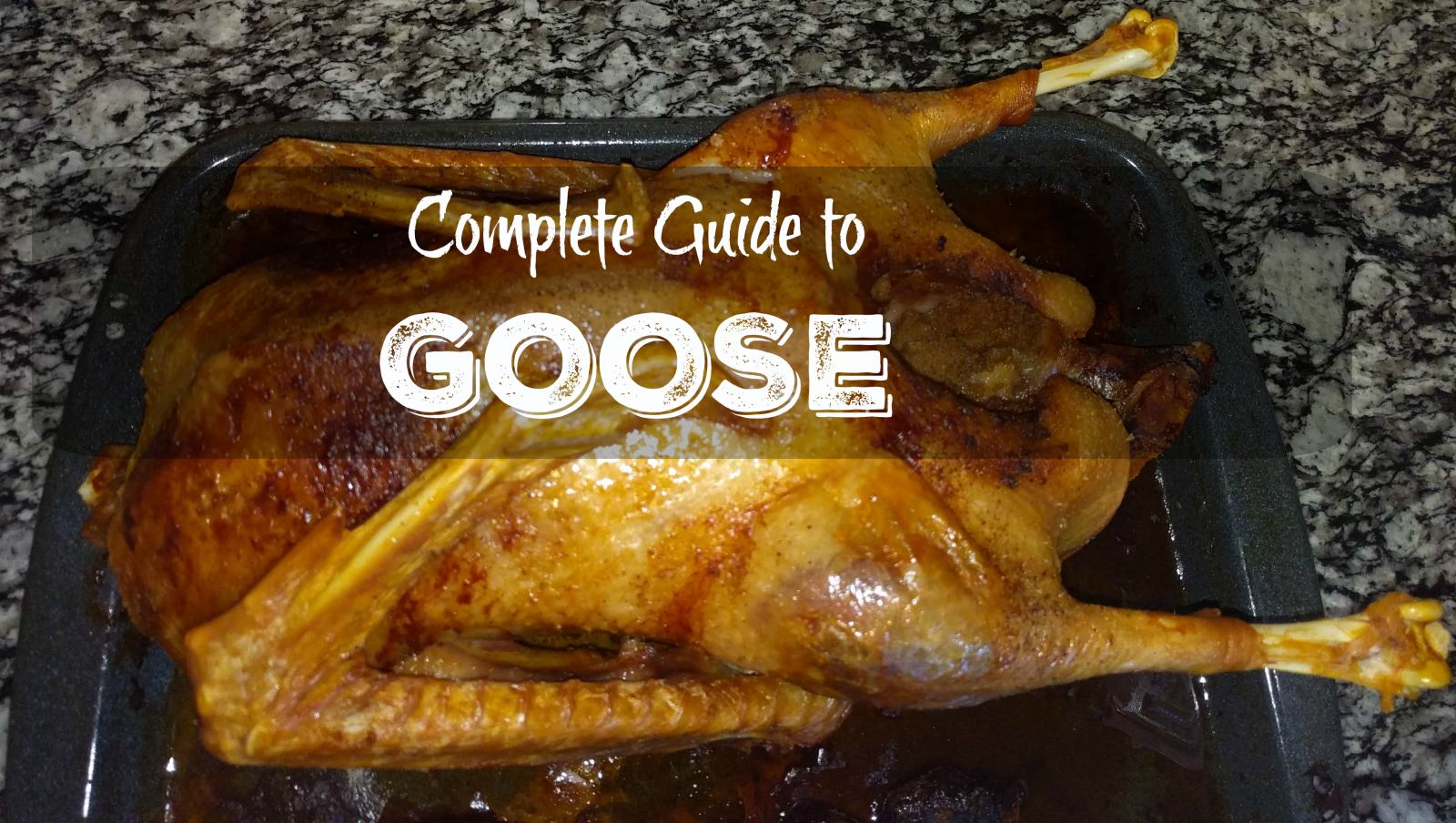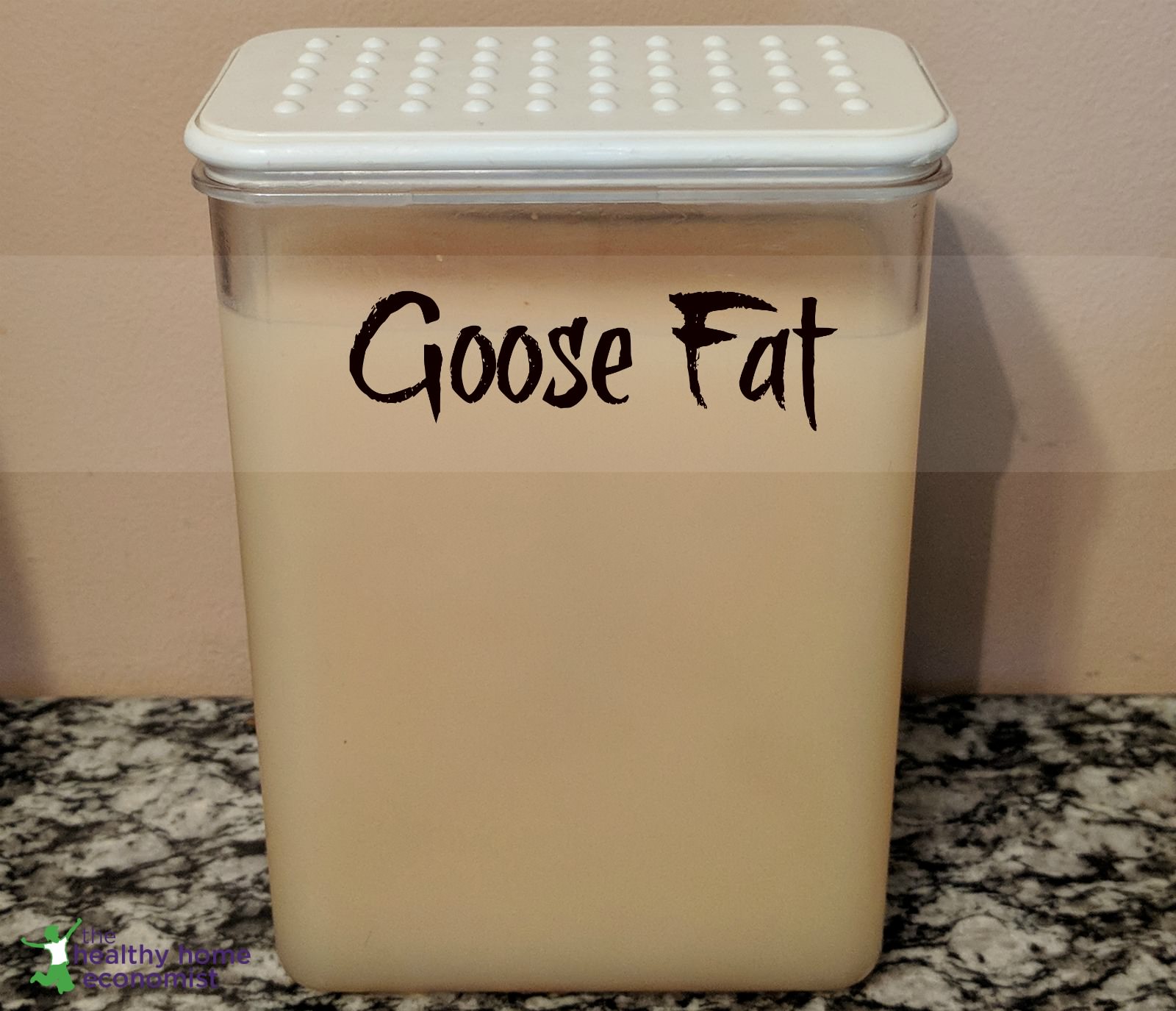 Goose is a wonderful option to run-of-the-mill chicken for a celebratory dinner. The taste and texture is somewhere between turkey and duck. Since our family always eats pastured turkey for Thanksgiving dinner, we like to enjoy a different type of fowl for Christmas just to mix things up. This year, it was time for roast goose once again!
Goose is a wonderful option to run-of-the-mill chicken for a celebratory dinner. The taste and texture is somewhere between turkey and duck. Since our family always eats pastured turkey for Thanksgiving dinner, we like to enjoy a different type of fowl for Christmas just to mix things up. This year, it was time for roast goose once again!
Roasting a goose is simpler and more budget friendly than you might think. While a bit more expensive pound for pound than pastured turkey, you will render a ton of goose fat and a gallon or more of goose stock in the process. You can reserve the rich, nutritious fat for roasting and adding tremendous flavor to veggies for weeks to come. The goose broth is a very rich base for soups and sauces. Traditional cooks refer to goose fat as “old white magic”. Roast potatoes in it, and you will experience the truth of this adage firsthand!
Our Christmas goose this year weighed in at 11.5 pounds and produced a full quart of rich, delicious goose fat. No other bird with the possible exception of duck is so generous. I promptly strained the golden goodness while still liquid into a large container and then refrigerated.
Goose Fat Benefits
Chicken or goose schmaltz has a very desirable fatty acid profile similar to beef tallow and pastured lard. The fatty acid breakdown in goose fat is as follows:
- Polyunsaturated fat: 11%
- Saturated fat: 27%
- Monounsaturated fat: 54%
The low amount of polyunsaturated fats (PUFAs) make goose fat extremely desirable for cooking and highly resistant to rancidity. The smokepoint is quite high at around 400 F degrees (204 C degrees). Hence, it is an excellent choice for safe frying.
Below is a picture of what rendered goose fat looks like after being poured and strained straight from the roasting pan and then chilled in the refrigerator. When liquid, it is a rich shade of yellow/orange not unlike the color of the enormous yolks of goose eggs.
 Goose Fat is Heart Healthy and Encourages Optimal Weight
Goose Fat is Heart Healthy and Encourages Optimal Weight
Goose fat turns whitish/beige and semi-solid in the refrigerator. This traditional fat is widely consumed in France, particularly the southwest region known as Gascony. The rate of heart attacks in middle-aged men in this region is incredibly low at 80 per 100,000. Compare this to the fat phobic United States, where the rate is nearly 4 times higher with 315 of every 100,000 middle-aged men suffering heart attacks each year. (1)
Not surprisingly, weight issues are rare in Gascony as well, a phenomenon known as the French Paradox. Those of us knowledgeable about traditional diets know that this is, in fact, no paradox at all. Healthy fats do not make you fat! Excessive sugar and carb consumption and munchie inducing factory fats like vegetable oils do!
How to Roast Goose
The steps for roasting a goose are not that different from roasting a duck or a turkey. It is important to follow traditional cooking guidelines, however, to ensure a juicy end result. The instructions below come from one of my favorite cookbooks The Hows and Whys of French Cooking.
Most geese weigh between 10-14 pounds (4.5 – 6.4 kg). These roasting instructions assume your bird is within that range.
Steps for Roasting a Goose
- Rinse goose thoroughly and pat dry with a towel.
- Preheat oven to 425 F degrees (218 C degrees)
- Place goose in roasting pan and rub with sea salt and pepper.
- Stuff goose with traditional stuffing if desired.
- Roast goose for 40 minutes.
- Reduce heat to 375 F degrees (191 C degrees) and roast for 1 hour.
- Turn heat down further to 325 F (163 C) and roast for 2 hours.
- Increase heat back up to 425 F (218 C) and brown for 20 minutes.
- Remove roasted goose from the oven and set on the counter uncovered for 15 minutes.
- Carve and serve.
- One roast goose serves 6.
Note that no basting of goose is necessary as the meat and skin are so high in fat. Throughout the roasting process, you will no doubt notice that the skin stays glistening with moisture!
I suggest that you cook the veggies that you plan to serve after the goose is out of the oven (step 9 above) and resting on the counter. Use a stainless steel baster to suck off some of the rendered goose fat in the roasting pan to cook them. The flavor is incredible!
How to Make Goose Stock
Making goose stock is very much like other types of bone broth. Once you’ve picked the roasted goose clean, use the leftover bones for making stock. I leave the meat on the wings and use the neck and heart (part of the goose giblets inside the bird) along with the carcass to boost the gelatin and flavor.
I would suggest using the goose liver to make paté instead of stock. Goose liver paté is loaded with the animal form of vitamin K2 known as MK-4. Food sources of this elusive fat soluble vitamin were considered sacred by traditional cultures. It is a critical and usually overlooked nutrient for avoiding the ravages of premature aging. Why? Because it is a politically incorrect nutrient … almost all the sources of K2 come from animal foods (with the notable exception of natto whose taste and smell disagrees with most people).

Traditional Goose Stock Recipe
Recipe for making goose bone broth from the leftover carcass of a roast goose.
Ingredients
- 1 goose carcass include meat from wings, neck and heart
- 3 carrots chopped, preferably organic
- 2 turnips medium, chopped, preferably organic
- 2 leeks chopped, preferably organic
- 1 onion large, chopped, preferably organic
Instructions
-
Clean and chop carrots, leeks, turnips, and onion.
-
Place ingredients in a large stockpot (this is what I use) and fill to cover with filtered water.
-
Let sit on the counter uncovered for 30 minutes.
-
Bring water to a boil. Skim off and discard any white foam that comes to the top just before boiling is reached.
-
Turn heat down, cover, and simmer on low for 6-24 hours. Check every few hours and top up with more filtered water as needed.
-
Remove from heat and cool. Strain broth into wide mouthed, half gallon size mason jars, screw on the lids and refrigerate. Goose bone broth will last about 5 days in the refrigerator. Freeze what you will not use in that time.
Sarah, The Healthy Home Economist








I definitely want to try my hand at cooking a goose. Cooked my 1st duck but had to use a deep pan and burned the fat.
I used a cake pan rack to keep the duck out of the fat, but it wouldn’t fit in my shallow roasting pan. Lesson learned.
The duck itself was delicious.
I would LOVE to get a recipe for Pho with goose!
Would this work in an Instant Pot?
What kind of pan do you recommend for roasting goose, or chicken or turkey etc? Are the Granite Ware roasters safe? What is best material for a roasting pan?
I use an enameled roasting pan. I am not familiar with Granite Ware.
Hi Sarah, My son is turning 13 this month and wants to try a goose dinner. I was wondering what you served with it? It is a meat that is good with gravy, like turkey?
Hi Laurie! Goose gravy is delish with the carved goose meat. We had it for Christmas dinner so served it with sprouted stuffing, gravy, and a variety of roasted veggies. It is in between duck and turkey … more fatty and rich than turkey, but a bit less than duck.
What about duck, same benefits? “Duck Fat”?
Duck fat is awesome too! Here is more info: https://www.thehealthyhomeeconomist.com/video-all-about-duck/
Dr. Natasha Campbell-McBride MD suggests roasting a duck every single week and using the fat to cook and add flavor to vegetables.
That goose looks delish. I’ve always wanted to try goose, but have been hesitant (on a budget, and also learning to cook different roast as a former vegetarian, I’ve mastered chicken and duck). I’m thinking of putting a little money aside to buy one for Easter.
Just roasted a goose over the holidays. The neck had lots if fatty skin on it. I removed most of the skin, cut it into cubes and rendered into little cracklings/lardons. Soo good!!
Do you have any special goose stock recipes? I was thinking of using it in a Pho type soup…?
Thank you for sharing the great information and recipes for goose! I am wondering if you are referring to a tame, commercially pasture raised goose, or if you are referring to wild goose? We have an abundant supply of wild goose and my husband is an avid hunter. I would love to properly prepare goose and make stock! Are there any parasite concerns with wild goose? Thanks again!
Wild goose would be great! I am not aware of any parasite issues with wild goose, but perhaps check with the wildlife services in your area just to be sure.
That is amazing that you got that much goose fat from roasting 1 goose! Goose fat is so expensive to buy … I’m going to roast a goose this week. I saw them in the frozen section at Whole Foods.